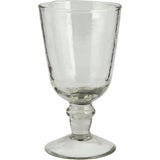Hammocks: Just relax!
Hammocks are a wonderful thing. This is not surprising, because only rarely can you relax so completely and enjoy nature and the sunshine. Let's take a closer look at the history of the hammock.
Origin of the word
The word hammock has its origins on the Caribbean island of Haiti. There the original inhabitants used sleeping nets, which they called hamáka. In Latin America, these sleeping nets were used because people could protect themselves from moisture, dirt, many insects and dangerous animals at night. When Columbus finally went ashore in America, he came into contact with these sleeping nets.
They were initially called Hamach or Hamaco in German. The oldest evidence for this comes from a document dating from 1529. But the word sounded too strange and was changed to hammock. What is fascinating about the then new word hammock is that it still sounds similar to the original word Hamach and at the same time it is a perfectly fitting description of what a hammock is: a hanging sleeping mat.
History
After Columbus' discovery of America in 1492, the Europeans quickly adopted the hammock from the Native Americans. Initially, hammocks were mainly used on ships, as this saved space and allowed more space for cargo. In addition, hammocks can be made relatively easily and quickly and can perfectly compensate for the natural rocking of a ship on the open ocean. Not only could the sailors sleep better, but the hammocks also prevented them from falling out of bed if the ship was caught up in strong waves.
With the European seafarers, the hammocks spread around the globe. Today you can find them all over the world.
Types of hammocks
A hammock is basically a place to rest or sleep, which is suspended from two fixed points in the form of a net. The lying surface sags, which makes a hammock very comfortable. Hammocks can be classified according to the type of material used and whether they have spreader bars.
The lying surface of the hammock can be made of netting or cloth. Those with a net are usually knotted, creating a fabric. But there are also knot-free net hammocks. These are made using a traditional Mexican technique. This has the advantage that the lying surface adapts perfectly to the body, which is more comfortable.
How comfortable a net hammock is basically depends on the knot size and the mesh size. The smaller the knot and the finer the mesh, the cosier it is. A cloth hammock has the advantage that it has no holes or knots from the outset, which makes it very comfortable.
The second factor is the spreader bars. These are used to hold the hammock open. So it is easier to lie down on and get up from the hammock. But if the weight is incorrectly distributed, the hammock can tip over, causing you to fall out.
If you want to get comfortable now, browse our range of hammocks here and find your favourite one!
Latest reviews
-
 5.0 (1)
5.0 (1)IB Laursen Winchester Hand-blown Wine Glass, H: 14.5
-5%- Elaborately handcrafted
- Extravagant look
- Great as a gift
£7.47 £7.85Delivery by January 16
-
 4.7 (3)
4.7 (3)Bialetti NOCCIOLA "Perfetto Moka" Ground Coffee, 250g, 250 g
- 80% Arabica, 20% Robusta
- Intensity: 8/10
- Carefully roasted and ground
£8.85 (£35.40 / kg)Delivery by January 16
-
 4.3 (3)
4.3 (3)Bialetti CIOCCOLATO "Perfetto Moka" Ground Coffee, 250g, 250 g
- 80% Arabica, 20% Robusta
- Medium roast
- Intense chocolate aroma
£8.85 (£35.40 / kg)Delivery by January 16
-
 4.7 (3)
4.7 (3)Bialetti Vanilla "Perfetto Moka" Ground Coffee, 250g, 250 g
- 80% Arabica, 20 % Robusta
- Traditional Italian roasting
- Intense vanilla aroma
£8.85 (£35.40 / kg)Delivery by January 16
Magazine Articles:
-
Great Britain: Free standard delivery from £69.90
-
Free
returns -
We operate in a
climate-conscious manner. More than 11.300 products

